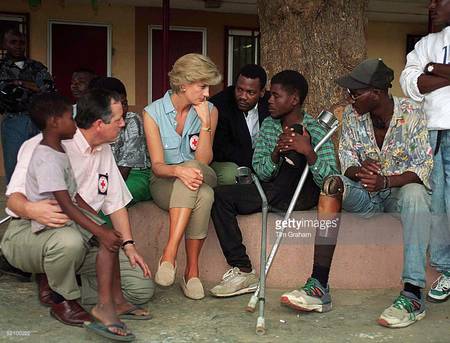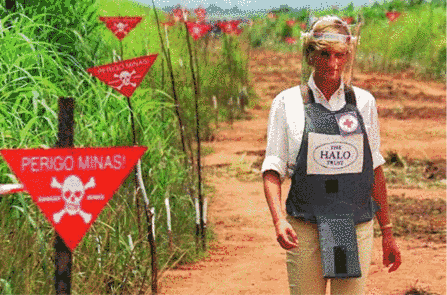|
31.08.2017
Geneva -- In the early 1990s, Angola, Bosnia, Cambodia, Mozambique and Nicaragua, to name a few, were some of the countries where the tragedy caused by anti-personnel mines was some of the greatest. Countless individuals worked tirelessly to bring awareness of the plight of landmine survivors everywhere. The ICBL, ICRC, Handicap International, were among those who first sounded the alert. Prominent figures soon joined the universal call for a ban on landmines. Among those was Diana, Princess of Wales, whose travels to minefields and visits to landmine survivors, helped bring home to many, the terribly high human costs of landmines. Diana, Princess Of Wales, At Neves Bendinha, An Icrc Orthopaedic Workshop In Luanda, Angola, With Victims Of Landmines. Photo, Getty Images.The landmine issue was thrown into the popular spotlight in 1997 when Princess Diana walked through one of HALO’s minefields in Angola. Photo courtesy, HALO Trust.Princess Diana died tragically on 31 August 1997, a day before the start of the Diplomatic Conference on an International Total Ban on Anti-Personnel Mines in Oslo. The Conference concluded with the adoption of what became the Anti-Personnel Mine Ban Convention, the first disarmament treaty to take into consideration the rights of the victims of the weapon in question. Diana had been scheduled to address the Conference on that first day of negotiations. On the 20th anniversary of her death, we remember her as one of the most visible anti-landmines advocates. Her contribution has not been forgotten. Now, her son Harry continues advocating for a mine-free world by 2025, teaming up with HALO Trust and the Mines Advisory Group, who protect lives and restore livelihoods threatened by landmines and other explosive remnants of war. Watch Princess Diana narrating in a three-part series, what brought her to advocate in favor of a landmine ban. For more information, please contact the Convention's implementation support unit: ISU@apminebanconvention.org.
|




